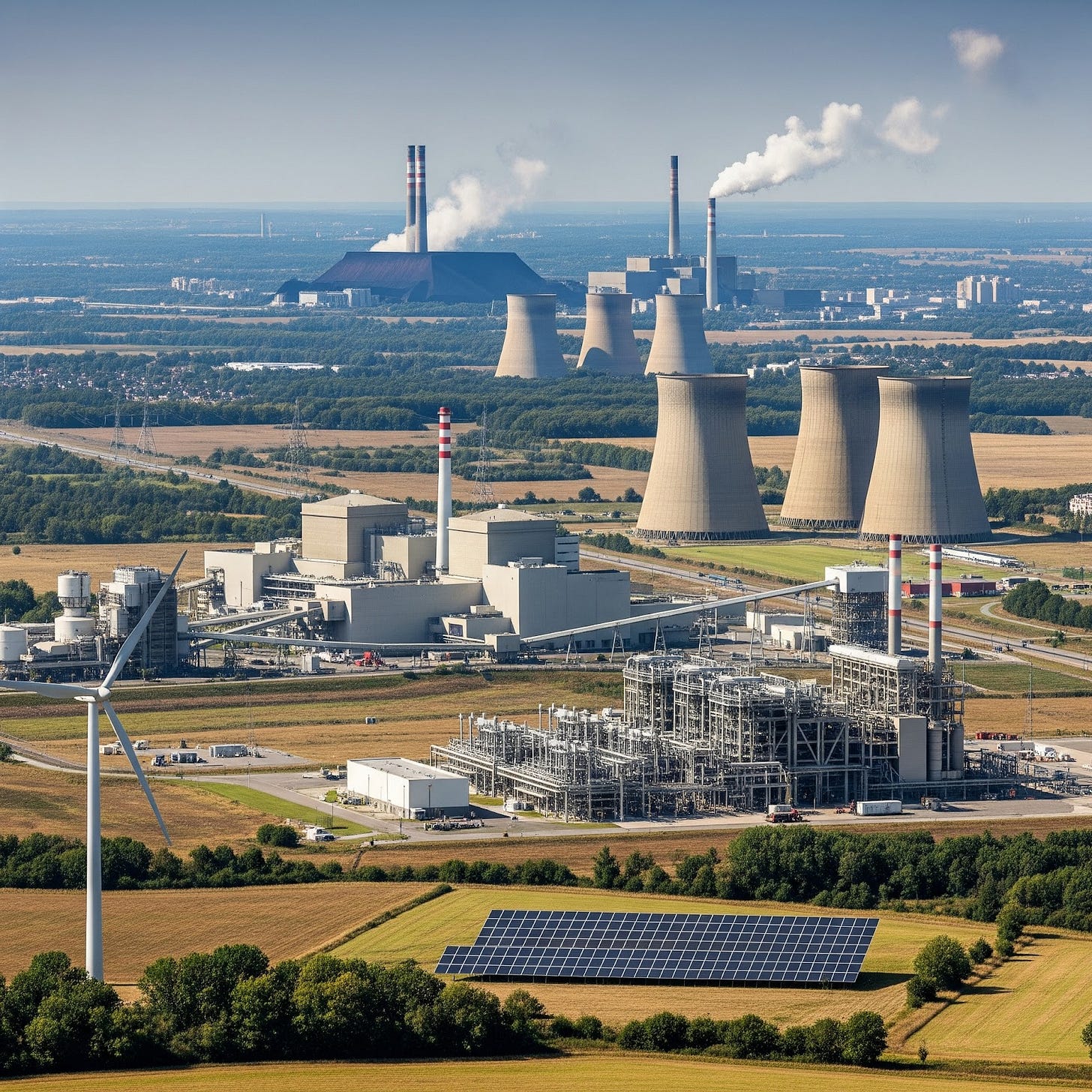Over time, the US power grid has seen waves of coal, nuclear, natural gas…and now solar
Studying the cyclical transformation of US power generation
I wrote a post on LinkedIn a couple of weeks ago showing the evolution of the US power grid since the end of World War II.
Here’s the chart I shared in the post:
I wrote about how we’ve seen waves of new builds in coal, nuclear, natural gas, wind, and now solar power generation.
I came to the idea of this post by talking with a very senior consultant who had built his career mostly through Accenture. He and I were talking power one evening, and he brought up how his teams use the wave-like nature of historical power transformations to help build their forecasts for the sector.
I decided to pull the data and explore these historical trends for myself.
My LinkedIn post led to some commentary on LinkedIn itself, but also some direct messages and offline conversation that I found super interesting.
After those interactions, I chose to make my next post here at Foundations of Energy a more thorough investigation of these historical power buildouts.

In this post, let’s look at how exactly the US power grid has evolved over the past 80 years.
We’re going to step through each of the new power generation technologies, showing how, when, and where new capacity came online. We’ll also give examples of some of the largest plants built during each wave, listing who owns the plant, where it’s located, and how much power generation capacity it has.
We’ll close with some thoughts around what this study of historical power generation is really telling us, and what we should expect for the future as a result.
Coal’s heyday in the US came in the 1970s and early 1980s
We’re going to jump right in with coal, which for many decades in the 20th century was the backbone of the US power grid.
Keep reading with a 7-day free trial
Subscribe to Foundations of Energy to keep reading this post and get 7 days of free access to the full post archives.




